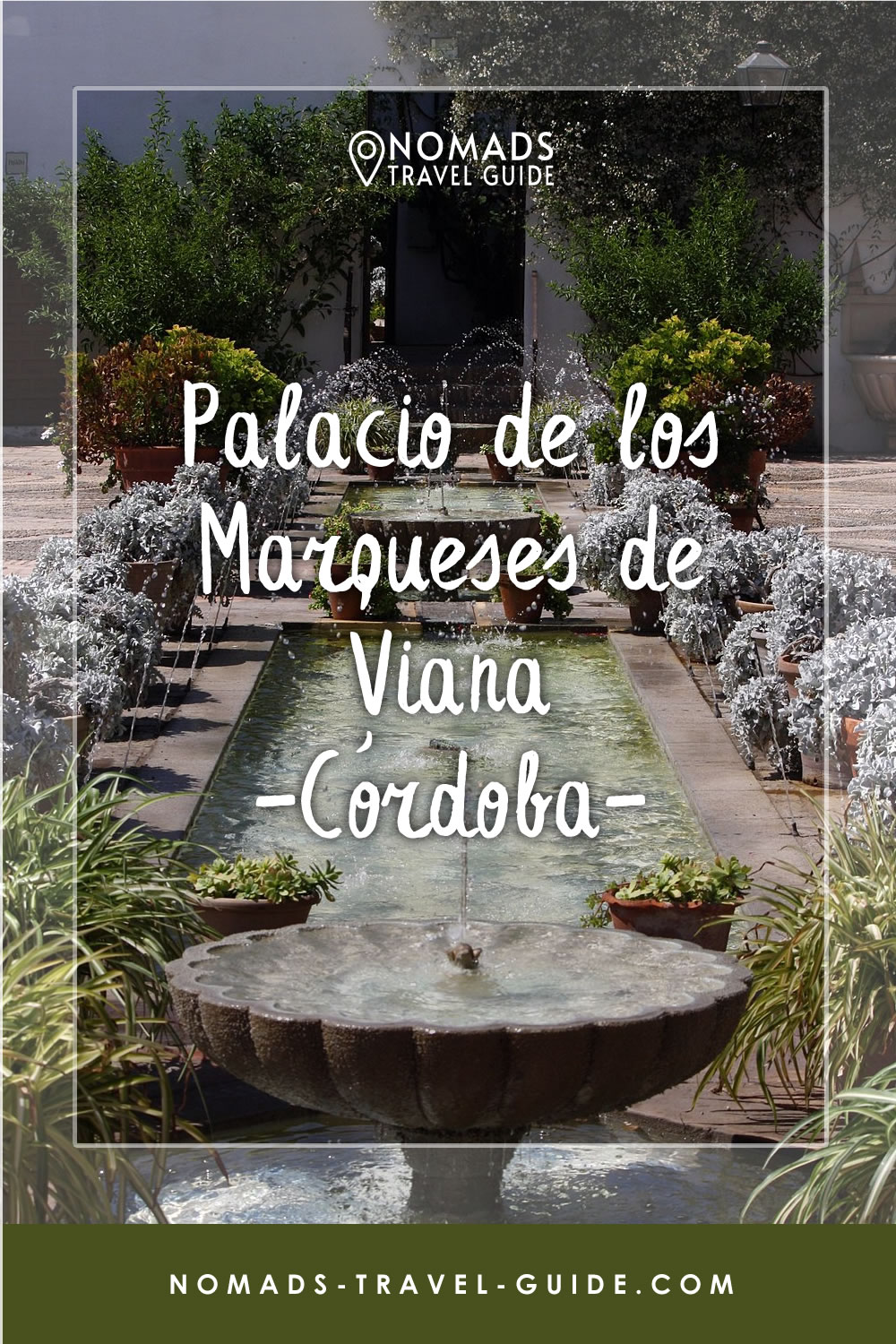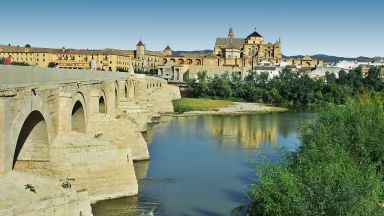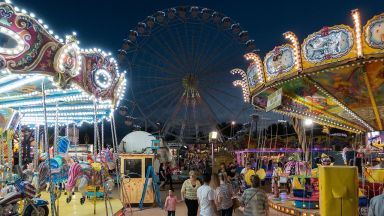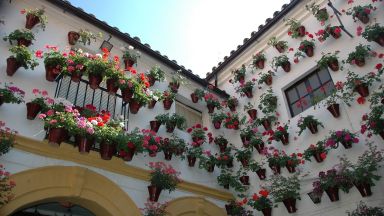Palacio de los Marqueses de Viana
Palace in Córdoba
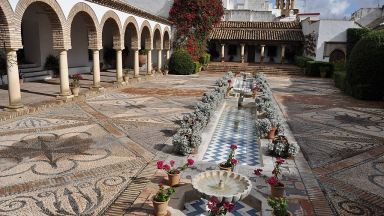
The Palacio de los Marqueses de Viana or the Palace of the Marquises of Viana, is a palace-museum located in the city of Cordoba, Andalusia, in Spain.
Although it is called a palace now, the Palacio started as a 15th century stately home. Over time, the aristocratic families who came to possess the building transformed it into a Renaissance palace. It was named ‘Palacio de Viana’ after the last family to live in the palace: the marquises of Viana. It is located in Don Gome plaza, in the Santa Marina district, towards the north of the city. It was declared “property of cultural interest” by the Spanish State in 1981. The palace houses collections of Renaissance art and is surrounded by twelve patios of various eras and aspects as well as a garden.
- A Short History of the Palacio de los Marqueses de Viana
- What does the Palacio de los Marqueses de Viana look like?
- Main Facade of the Palacio de los Marqueses de Viana
- Ground floor of the Palacio de los Marqueses de Viana
- Nobles Floor of the Palacio de los Marqueses de Viana
- Recommended Patio Tour
- See the Patios of the Palacio de Viana
A Short History of the Palacio de los Marqueses de Viana
Although it is though that buildings existed here from the 14th-century and some archaeological findings, believing that it was originally a Roman building.
The Viana Palace was a palatial house built in the 15th century by Marquis of Villaseca. The palace underwent several transformations over the centuries, especially in the 17th century which gave it its current appearance. The palace remained in the possession of the Villaseca family until, in the mid-19th century, it was transferred to the Marquises of Viana by marriage.
The palace was bought by the Provincial Savings Bank of Cordoba in 1980, shortly before the death of the childless 3rd Marquise of Viana, and opened to the public as a museum and cultural center.The palace is currently (in 2016) the property of the CajaSur banking foundation. It is open to the public.
What does the Palacio de los Marqueses de Viana look like?
The 18 owners from the nobility who lived here since the 15th century extended the building and courtyards in an irregular fashion to give a good overview of the changes in tastes and fashion throughout the past five centuries. The floor is an irregular polygon, as a result of the constant attachment of houses which have extended the original construction.
Main Facade of the Palacio de los Marqueses de Viana
Its main facade on the Don Gome Square was though to have been designed by Juan de Ochoa, in a mannerist style, during the 16th century. It has a first lintelled section, with panels, over which we can see a cornice divided by the balcony of the second section, which is framed by two big mythological sculptures attached to the façade. The ensemble is crowned, over the balcony, by the crest of the Saavedra family, with the crest and crown of marquis, inside the necklaces of the orders of Carlos III and the golden fleece.
Ground floor of the Palacio de los Marqueses de Viana
Highlights of the ground floor include:
- The Mosaic Room would be the original entrance to the interior of the house for the guests.
- The Hall of Tobías, decorated with magnificent frescos about the life of this well-known Biblical character.
- The Hall of Signatures housed a great book where the great personalities of the time who visited the palace signed.
Nobles Floor of the Palacio de los Marqueses de Viana
Climbing the beautiful Main Stairway, you get to the noble floor, which, due to its size, has been divided in two areas, eastern and western.
- The Black Bedroom is named in such a way for its glazed tiles and its 18th century setting.
- The French Bedroom stands out for its 18th century French furniture and a painting of Queen Elizabeth de Farnesio holding the future Carlos III in his arms , the work of Miguel Jacinto Meléndez .
- The Salón del Artesonado stands out for its 16th century Flemish tapestries with a mythological theme and other paintings by Bartolomé González y Serrano and Juan Pantoja de la Cruz . Its Mudejar cover is from the modern period.
- The Portuguese Salon is named for its eighteenth-century Baroque furniture from Portugal , as well as its crystal chandelier at the Royal Palace of La Granja de San Ildefonso.
- The dining room is a large room where stands the Talavera de la Reina pottery of the eighteenth century and a portrait of King Alfonso XIII in the uniform of weapons, dedicated to the II Marquis of Viana, by Joaquín Sorolla in 1908.
- The decoration of the Red Room was made by the III Marchioness of Viana and last owner, Sofía de Lancaster. It highlights a Chinese folding screen by Coromandel , a gift from his wedding, as well as a Bohemian lamp and a portrait of Queen Victoria Eugenia by Joaquín Sorolla.
Recommended Patio Tour
There are a few tours of that area. This is our recommendation.
See the Patios of the Palacio de Viana
Cordoba is well known for the marvelous patios that you can find in every corner of the city. Viana Palace covers a surface of more than 6,500 square metres, of which almost 4,000 of them correspond to courtyards, gardens and open spaces. There are twelve patios to see.
- Patio de Recibo or Receipt patio – was added to the palace in the 16th century, when the Renaissance entrance was also created by Juan de Ochoa, since the entrance was originally made through the patio of the Naranjos. The Patio de Recibo houses sixteen Tuscan-style columns. It is attached to the stables, which also had external access, and where the manger and a bridal chariot are located.
- Patio de los Gatos or Court of the Cats – This patio were created from the patios of small houses that adjoined the Palacio, which were bought by the first lord of Villaseca; however, different families continued to be able to use the courtyards. It was not until the 18th century when they were fully integrated into the palace. They were also known as the Patio de las Cocinas or Patio of the Kitchens.
- Patio de los Naranjos or Patio of the Oranges – Original entrance to the palace during the 15th century before the Patio de Recibo was built. It houses a large number of orange trees, hence its name, in addition to an ornamental pool.
- Patio de las Rejas or Patio of the Bars – It receives this name for the monumental bars made by Bartolomé de los Reyes in 1624, which allow observing the patio from the outside as a sign of high social status, which is why it has always been one of the most pampered courtyards by the owners. The citrus on trellises around the fountain stand out.
- Patio de la Madama or Lady’s Courtyard – Made in the 18th century by the VI Marchioness of Villaseca. It receives this name for the statue of a nymph in the center of a fountain and surrounded by cypress trees. It is a very intimate courtyard which is connected to a bedroom.
- Patio de la Alberca or Pool courtyard – Incorporated next to the garden in 1814, previously belonging to the Marquis of Torres Cabrera. The greenhouse was built in 1960, while the pool was moved from the neighboring patio del Pozo in 1980.
- Patio del Pozo or Patio of the well – Also included in the palace in 1814, here was the well. From the well, water was extracted from the an underground stream that supplied the entire palace and the other courtyards.
- Patio de los Jardineros or Gardeners Courtyard – Added to the palace in the 19th century, it remained a gardeners’ workplace, where they kept their belongings for this task. The II Marquis of Viana brought numerous archaeological remains to decorate the courtyard and the wall is covered by celestines. It houses a tile that commemorates the inauguration of the La Laguna oil mill (denomination for its proximity to Laguna Grande , in Baeza ) in 1926 in the presence of King Alfonso XIII.
- Patio de la Capilla or the Chapel Courtyard – The courtyard was annexed during the 19th century, being the main courtyard of the former owners of Torres Cabrera, and it gets its name from a chapel that has now been recovered along with it. It houses less floral variety because it is the coolest patio in the complex. In the old chapel we find three paintings: San Rafael and San Miguel (1655-56), both by Valdés Leal , and Allegory of the defense of the Immaculate Conception by the Franciscans , from the Antonio del Castillo school.
- Patio del Archivo or the Patio of the Archive – Fruit of the configuration made by the VI Marchioness of Villaseca during the eighteenth century. Being the innermost courtyard of the complex, its name is due to the palatial archive located on the mezzanine. This archive, which houses more than 300,000 documents from the 12th and 20th centuries, was the only part of the palace that did not pass into the hands of CajaSur in 1980, but was acquired in 2000, being opened to researchers. The fountain is the only point of color in the courtyard, since the walls are whitewashed .
- Patio de la Cancela – Entrance of the palace of the Marquis of Torres Cabrera until its acquisition in the 18th century, which was integrated into the complex. It has been the entrance of carriages, as evidenced by a reused trough, and in the middle of the 20th century archaeological objects were added, such as a marble plaque from the 2nd century of Hercules’ fight against the Nemean lion .
- Patio de las Columnas or the Columns Courtyard – This is the most recent patio, since it was built during the 1980s once it was acquired for public visits. Its size makes it the largest in the complex, second only to the garden. Various cultural events such as the May Crosses, exhibitions, theaters or award ceremonies were held here.
- The garden is the largest open-air area of the palace (1,200 square meters), acquired by the VII Marquis of Villaseca in 1814 from the Marquis of Torres Cabrera. The garden is less ornate than the patios, with more trees and and more greenery. With this expansion, the size of the palace was doubled, since the aristocrat considered it necessary to have a larger green space. It is set in sixteen parterres of boxwood , typical configuration of French gardens of the time. The oak is the oldest plant in the complex, which is estimated to be over four hundred years old and reaches twenty-five meters.
The Palacio de los Marqueses de Viana appears in our Complete Guide to Visiting Córdoba!
This website uses affiliate links which may earn a commission at no additional cost to you!
Visiting Palacio de los Marqueses de Viana
Tue – Sat: 10 am – 7 pm
Sun: 10 am – 3 pm
€8
Nearby Attractions
- Plaza del Conde de Priego (0.2) km
Square in Córdoba - Santa Marina (0.2) km
Area in Córdoba - Palacio de Orive (0.3) km
Palace in Córdoba - Templo Romano de Córdoba (0.5) km
Historic Site and Temple in Córdoba - Centro de Interpretación de la Fiesta de los Patios Trueque Cuatro (0.5) km
Museum in Córdoba - Malmuerta Tower (0.5) km
Tower in Córdoba - Plaza de la Corredera (0.6) km
Square in Córdoba - Palacio de la Merced (0.6) km
Historic Building in Córdoba - Plaza de las Tendillas (0.7) km
Square in Córdoba - Museo Julio Romero de Torres (0.8) km
Museum in Córdoba
Save this Guide for later!